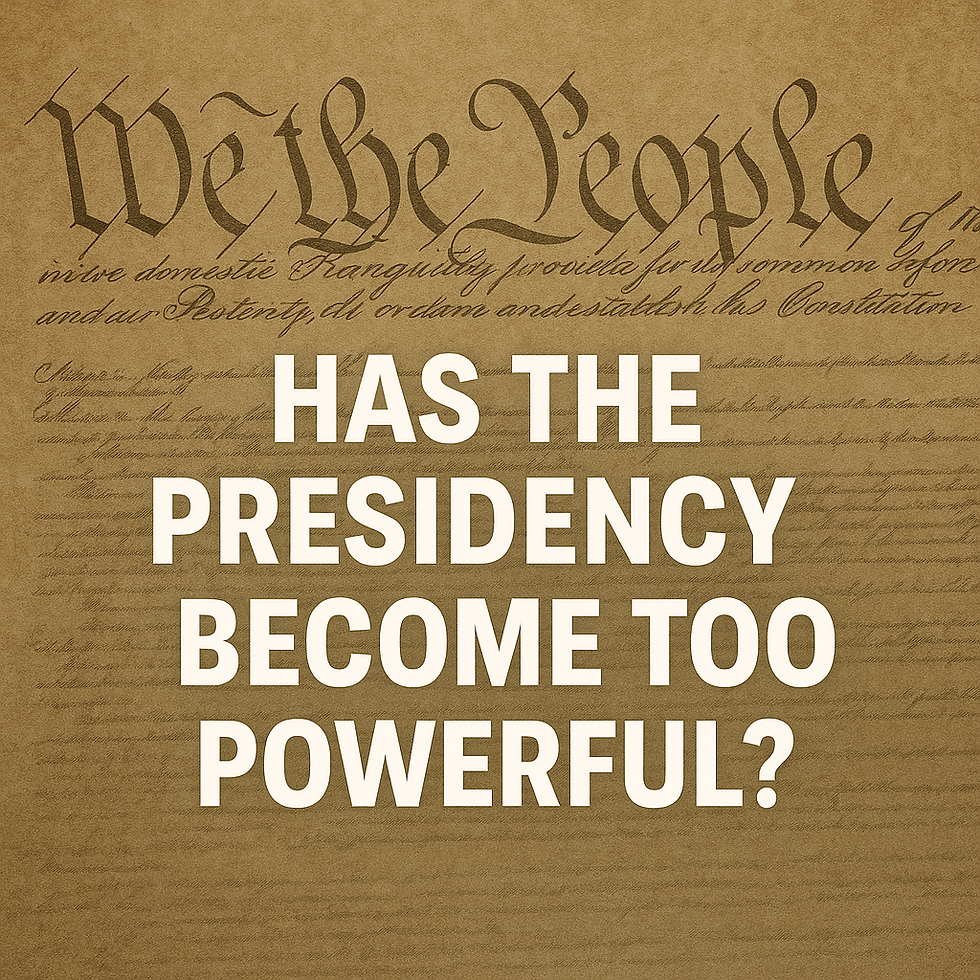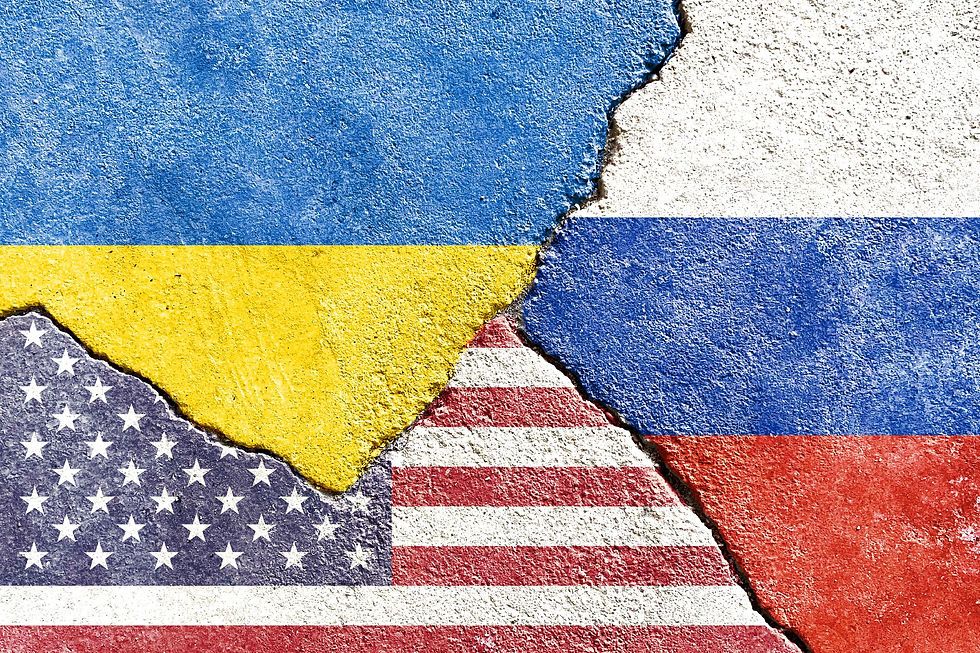Executive Power in the 21st Century: Practical Necessity or Democratic Risk?
- Dr. Johnson -UnTangled Talk

- Jul 4, 2025
- 3 min read
By Dr. Levino L Johnson Jr., Ph.D. [Public Policy]
In the span of just a few weeks, one could argue that the U.S. political landscape has undergone subtle yet profound shifts. The recent passage of the One Big Beautiful Bill Act (OBBBA) by Congress, coupled with key Supreme Court rulings favorable to President Trump’s administration, raises timely and critical questions about the trajectory of executive power in American governance.
This blog is not an indictment of one individual or one party. It is an invitation to examine the evolving nature of presidential power, factually, historically, and with intellectual honesty.

A Legislative Victory with Far-Reaching Implications
The OBBBA, passed narrowly along party lines, marks one of the most sweeping legislative packages in recent years. The bill proposes substantial reductions in funding to Medicaid and food assistance programs. According to the administration, these changes target inefficiencies and abuses within the system, citing recent government audits and reports of billions lost annually due to improper payments, fraudulent claims, and eligibility mismanagement. The administration also points to data suggesting a significant number of able-bodied adults without dependents remain on these programs longer than intended, potentially straining the system. Furthermore, concerns have been raised about the enrollment of undocumented immigrants despite federal restrictions. While officials emphasize that the reforms are designed to preserve benefits for the truly vulnerable, such as seniors, children, and people with disabilities, critics warn that the practical effects may still lead to reduced access for those in need. As with any sweeping policy shift, time and implementation will determine the true impact.
The Courts Step Back from the Guardrails
Perhaps more consequential than legislation are the Supreme Court’s recent decisions that limit the power of lower courts to block presidential actions. One case allowed for partial enforcement of Trump’s executive order to end birthright citizenship, narrowing the use of nationwide injunctions that have often served as a brake on executive overreach.
Notably, one could argue that the recent rulings reflect a judiciary that is increasingly deferential to executive action, especially under the doctrine of unitary executive theory, which posits that all executive authority ultimately rests with the President. While not new, this theory is gaining strength through precedent and practice.
Executive Power Isn’t New—But This Moment Is Unique
Presidents have long acted without formal congressional declarations of war. The War Powers Resolution of 1973 attempted to reassert Congress’s role in military decision-making, requiring notification and withdrawal unless approval was granted. Yet in practice, presidents have operated with considerable freedom:
Nixon’s secret bombing of Cambodia
Obama’s intervention in Libya
Trump’s 2017 missile strikes in Syria & 2025 recent Iran Nuclear Facilities strikes
The 2001 Authorization for Use of Military Force (AUMF), passed in response to 9/11, has been used by multiple administrations to justify military actions far removed from its original scope. This blend of legislative delegation and executive initiative has shifted the balance over time, with the modern presidency often acting first and explaining later.
Are We Witnessing a Structural Rebalancing?
This isn’t about labeling Trump as an autocrat or savior. Rather, it’s about asking whether the institutional designs meant to balance power are functioning as intended. With one party holding the presidency, both chambers of Congress, and enjoying a friendly majority on the Supreme Court, the U.S. may be witnessing a moment when the presidency exercises more consolidated power than at any time in modern history.
Does this create a system more like the governments we critique, where decisions flow from the top and checks are rare? Or does it allow a democratic nation to respond faster and more decisively in times of uncertainty?
Power, Precedent, and What Comes Next
Executive orders are easier than legislation. They can be enacted quickly. But they’re also vulnerable, rolled back with each new administration. That creates a cycle of volatility, not stability. It also raises the question: are we building a durable system or one dependent on personality and partisan opportunity?
Today’s actions set tomorrow’s standards. If the courts defer, if Congress defaults, if presidents can rule by fiat, what does that mean for the idea of government by the people, through their representatives?
The Questions We Should Be Asking
Is today’s concentration of executive power a practical evolution or a dangerous departure?
Do recent court rulings represent necessary judicial restraint or an erosion of accountability?
Can Congress regain its constitutional role, or is it content to legislate through the executive?
Does a more powerful presidency serve democracy, or challenge it?
I would argue that this moment demands more than a reaction. It demands civic reflection. Let’s meet that moment with respectful, rigorous debate! Please share your thoughts.
Dr. Levino L Johnson Jr. is a public policy scholar with expertise and a Master of Science in global affairs and international relations from New York University. This blog is intended to encourage informed, nonpartisan conversation.



link link link link link link link link link link link link link link link link link link link link link link link link link link link link link link link link link link link link link link link link link link link link link link link link link link link link link link link link link link link link link link link link link link link link link link link link link link link link link link link link link link link link link link link link link link link link link link link link link link link link link link link link link link link link link link link link link link